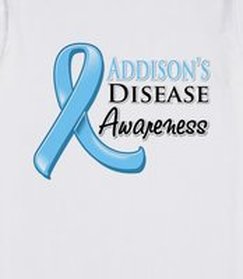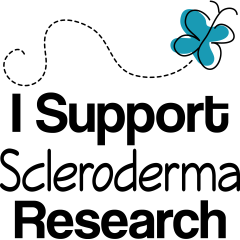 Only 1 in 100,000 individuals have this disease. Addison's Disease is a rare autoimmune condition that affects the adrenal glands. These glands play a pivotal role in regulating hormones in the body. When these glands don't produce enough hormones, Addison's Disease occurs. In this disease, the adrenal glands have made an insufficient amount of a hormone called cortisol. Cortisol is essential for everyday health due to the fact that it regulates the body's response to stress. Cortisol is also responsible for regulating your body's use of carbohydrates, protein, and fat. It aids in regulating blood pressure and helps with cardiovascular function. There are two forms of Addison's Disease: Primary Adrenal Insufficiency: The issue rests solely on the adrenal glands (it started there and is contained there). Secondary Adrenal Insufficiency: The issue started elsewhere in the body, such as the pituitary gland. How is Addison's Disease considered autoimmune? While Addison's Disease results from the glands themselves, autoimmune disease is responsible for 70% of the disease. This occurs when the immune system attacks the adrenal glands, thinking that the glands are bad. The assault destroys the outer lining of the adrenal glands. Symptoms of Addison's Disease -Low blood pressure -Weight loss -Chronic fatigue -Blotchy skin -Hypoglycemia -Nausea -Diarrhea -Inability to handle stress -Unable to tolerate hot or cold -Craving salty food -Mood changes How is Addison's diagnosed? It is commonly detected during routine blood tests. Once it is detected, your doctor will check you for skin changes or changes in your gum health. In order to get an accurate diagnosis, your doctor will measure hormone levels in your blood and urine before and after giving ACTH (hormone in the brain that increases the amount of cortisol in the body). Measuring the levels can help your doctor figure out if Addison's is caused by a problem in your brain or adrenal gland. Your doctor may order CT Scans and Xrays in order to pinpoint the cause. Treatment for Addison's Disease -Hydrocortisone: A steroid hormone -Fludrocortisone Acetate: A synthetic steroid. Any treatment may need to be increased during times of injury, infection, surgery or stress. Treatment has a successful track record, and those with the disease can lead a full and normal life. It is important to carry an extra supply of medication with you, and you should wear a medical alert bracelet. Addisonian Crisis Addisonian Crisis is what occurs when symptoms of Addison's Disease worsen quickly. Symptoms of this crisis include: -Fatigue -Penetrating pain in the stomach, lower back, or legs -Severe diarrhea and vomiting -Dehydration -Fever -Low blood pressure -Kidney shutdown -Losing consciousness
0 Comments
 Roughly 2% of the population has the following autoimmune condition. Vitiligo is an autoimmune skin condition in which white patches develop onto the skin. This condition can affect any area of the body. Individuals who have vitiligo have white patches in various areas of the body. This condition is caused by a loss of pigment (melanin) in the skin. While the root cause is not known, doctors theorize that the cause may be autoimmune. They believe that the body's immune system destroys the pigment forming cells (melanocytes), thus causing the white patches on the skin. What are the risk factors for Vitiligo? The onset of this condition develops early in life, when the individual is between 10 and 30 years of age. It is believed that if a family member has this condition, others are at risk for developing vitiligo. Individuals who have other autoimmune diseases, such as Hashimoto's, are at risk for vitiligo. Symptoms of Vitiligo -Rapid loss of skin pigmentation on various areas of the body. -Changes in eyelids -Changes in hair health Diagnosis and treatment Vitiligo can be easily diagnosed by a doctor during a physical examination. Vitiligo has no cure, but there are ways to improve the appearance of the affected area. Some of those treatments include: -Cosmetics -Re-pigmentation via UV light therapy -Corticosteroid creams -Skin grafting Closing remarks The above photo is of a model who has vitiligo. Chantelle Brown-Young rose to fame when she appeared on America's Next Top Model. During a 2014 interview with the Today show, she said the following: “I definitely hope and I feel that I am inspiring, but I don’t like the word role model. I feel like people put too much on the title of a role model ... you should be careful what you choose to see as a role model, whereas inspiration can come from anywhere. The only person that can make you feel that you aren’t beautiful is you. You can’t let someone else lower your self-esteem because that’s what it is — self-esteem, you need to first love yourself before you have anybody else love you.”  Vasculitis refers to inflammation of blood vessels in the body. When these blood vessels experience inflammation, they weaken and stretch in size. Some may narrow or close entirely. There are some forms of vasculitis that affect the internal organs, examples being the brain, skin, and eyes. Other forms of vasculitis may affect many organs at one time. What causes Vasculitis and how is it considered autoimmune? The underlying cause of vasculitis is unknown. However, some believe that it can be triggered by particular viruses or allergies to medications. Vasculitis is known to develop when a virus has manifested and left. The viral infection triggers an abnormal response in the affected individual's immune system. This can cause the immune system to attack the blood vessels, causing damage. It is also believed that vasculitis is a possible complication of other autoimmune diseases, such as Sjogrens Syndrome, Rheumatoid Arthritis, or Lupus. Vasculitis has the potential to be a very serious illness. In extreme cases of blood vessels weakening, they could stretch and bulge, causing an aneurysm. The wall of the blood vessel can become so damaged that it could rupture and bleed out, causing death. This is quite rare, however. Symptoms of Vasculitis -Rash -Loss of sensation -Muscle Weakness -Stroke -Heart attack -Kidney failure -Fever -Loss of appetite -Fatigue How is Vasculitis treated? Treatment depends on the diagnosis and what organs may be involved. If vasculitis is the result of an allergic reaction, it might go away on its own, not needing treatment. If major organs are being affected by vasculitis, aggressive treatment is needed. These treatments include: -Corticosteroid medications -Chemotherapy medication Closing remarks: According to WebMd, the prognosis for vasculitis is more promising today than they were years ago. Individuals who successfully respond to treatment are able to live close to a normal life span. It is important to stay in contact with your doctor while being treated, and even when in remission.  Sjogren's Syndrome is an autoimmune disease in which the immune system attacks the glands that provide moisture to the body (tears, saliva, etc). Individuals who have this disease have difficulty with producing tears and saliva. In rare cases, this illness can affect the kidneys and lungs. Doctors are still uncertain as to what causes this disease, but they do know that it runs in families. People who have Lupus, Rheumatoid Arthritis, and/ or Scleroderma are at risk of developing Sjogren's. While anyone can develop Sjogren's, it is more likely to develop in Caucasian women between the ages of 40 and 50. Symptoms of Sjogren's Syndrome -Very dry mouth -Very dry eyes -Itching and burning in the eyes. How is Sjogren's Syndrome diagnosed? Your doctor will conduct a physical examination, and ask questions about your symptoms. Your doctor may ask about any medications you have been taking, just to rule out other causes for the symptoms. After examination, your doctor may test your tear flow and saliva. A blood test may also be ordered to help the doctor make a definitive diagnosis. How is Sjogren's Syndrome treated? The type of treatment may vary based on the severity of symptoms. However, the most common treatments are: -Artificial tears -Mouth lubricant -Steroid meds for joint pain Closing remarks: If the above symptoms last 3 months or longer, contact your doctor immediately. In the medical world, there has been a great deal of controversy as to whether or not Endometriosis is an autoimmune disorder, or the result of another autoimmune disease, such as Lupus and Rheumatoid Arthritis.
Endometriosis is a painful condition. Cells that are normally found in the uterine lining, start to appear in other areas of the body. It is still unclear as to how these cells made it to other areas of the body. The immune system targets these cells and wages an attack on them, thinking that these cells are foreign. On the flipside, scientists also believe that the immune system may not acknowledge these misplaced cells. This will allow the cells to continue their journey throughout the body, causing damage to various organs. Symptoms of Endometriosis -Heavy menstrual periods -Infertility -Pelvic pain -Cramping -Lower back pain -Pain during sexual intercourse How is Endometriosis diagnosed? Your doctor will conduct a physical examination. In some cases, doctors may conduct a recto-vaginal exam (one finger in the rectum, one finger in the vagina) in order to feel for nodules behind the pelvic wall and uterus. Your doctor may order an ultrasound to rule out other diseases associated with endometriosis. While these exams can be somewhat helpful in ruling out other illnesses, the only definitive way to diagnose Endometriosis is with surgery. Laparoscopy is the most common surgery used as a diagnostic. During this surgery, your doctor will take biopsies and test them for Endometriosis. How is Endometriosis treated? -Anti-inflammatories (N-SAIDS) -GnRH analogs -Oral contraceptive pills -Progestins -Aromatase inhibitors Surgery may be required symptoms are severe, and all other forms of treatment have failed. Closing remarks: Endometriosis is an emotionally and physically painful disease to live with. Some women suffer from infertility due to this illness. While it is important to treat the symptoms of the illness, it is also important to seek help from a therapist to help with the emotional distress. This goes for anyone dealing with an autoimmune disease or any other chronic illness. We can make our illnesses a smidge more manageable if we also keep our mental health in check.  Hashimoto's is an autoimmune disease that affects the thyroid gland. In Hashimoto's, a person's immune system creates antibodies that cause damage to the thyroid gland. While doctors are not 100% sure about what causes Hashimoto's, they theorize that it may have something to do with genetics, bacteria, or a virus. Who's at risk for Hashimoto's Disease? While anyone can develop Hashimoto's, women are more at risk for developing the disease than men. The disease is often seen in middle age than at any other age. As mentioned before, genetics do play a role in someone being at risk for Hashimoto's. If you have a family member with this disease, or any other autoimmune disease, you may be at risk for Hashimoto's Disease. Symptoms of Hashimoto's Disease -Goiter on the front of the neck -Fatigue -Weight gain -Joint pain -Hoarse voice -Pale face -Puffy face -Muscle aches and weakness It is important that you contact your doctor right away if you experience the above symptoms, and/or any of the following: -Fatigue -Hoarse voice -Dry skin -Constipation How is one diagnosed with Hashimoto's? Your doctor will need to know your symptoms. After you tell your doctor your symptoms, he or she will order blood work in order to measure your thyroid levels. Other tests may consist of an antibody test and hormone test. How is Hashimoto's treated? Once a diagnosis has been confirmed, your doctor will figure out the best course of treatment for you. Typically, Hashimoto's is treated with synthetic thyroid hormones. Your doctor will carefully monitor you, as there are some risks in these hormone treatments. Too much thyroid hormone in the body can put you at risk for osteoporosis. Heart beat abnormalities is also a potential risk with these treatments. Closing remarks: A few years ago, after getting back in touch with my aunt, she told me that she has Hashimoto's. It put in perspective how important it is for us to know our family history. My mother (her sister) has thyroid issues as well. Because all of these autoimmune diseases run in my family, my doctor and I stay in contact to monitor my health situation. My aunt, from what I've heard, is doing well. She lives a normal life and takes care of her family. Getting a diagnosis of Hashimoto's, or any other autoimmune disease, does not have to destroy your life. You have to go at your own pace, take your medication, and just be aware. I want to continue to stress the importance of learning about autoimmune diseases. Even more important is knowing your family's medical history. I also encourage you to keep a record of your symptoms. There may be a war going on in our bodies, but that doesn't mean that we cannot control the internal chaos. Do what you can, and don't let anyone make you ashamed of your illness.  Graves' Disease is an autoimmune disorder that results in too much production of hormones in the thyroid (hyperthyroidism). Thyroid hormones affect a great number of systems in the body, so there is a wide range of symptoms of Graves' that can significantly impact ones overall well-being. What causes Graves' Disease? Graves' is caused by an immune system malfunction. The body produces an antibody to a portion of the cells in the thyroid gland. This antibody acts like it is a regular pituitary gland. It overrides the normal mechanics of the thyroid, causing the thyroid to produce too many hormones. Symptoms of Graves' Disease -Irritability -Anxiety -Hand tremors -Sensitivity to heat -Increased sweating -Thyroid gland becomes enlarged -Bulging eyes -Heart palpitations -Decreased sexual libido What is Graves' opthalmopathy? It is estimated that 30% of the individuals who have Graves' disease have something called Graves' Ophthalmopathy. In this disorder, individuals experience inflammation and a series of internal symptoms that cause the eyes to bulge. Eye sight and increased pain in the eye are also experienced. What is Graves' dermopathy Although rare, this type of Graves' Disease can occur. Symptoms may include reddening and thickening of the skin on your shins and the tops of your feet. Risk factors for Graves' Disease -Family genetics -Women are much more likely to develop this disease. -Individuals under 40 years of age. -Individuals afflicted with other autoimmune diseases. -Smoking -Pregnancy Testing and diagnosis for Graves' Disease. In order to accurately diagnose someone with Graves' Disease, your doctor will conduct a physical exam. He or she will check your eyes and thyroid. Your doctor will order blood tests, checking your TSH levels. The doctor will also be looking at the levels of a certain antibody that is known to cause Graves' Disease. Other tests may include: -Radioactive iodine uptake -Ultrasound -Imaging tests How is Graves' Disease treated? The goals for treatment is to restrain the production of hormones and also to block the effect of the hormones from impacting the body. Treatments may include: -Radioactive iodine therapy -Anti-thyroid medications -Beta blockers -Surgery Closing remarks: If you suspect that you might have Graves' Disease, contact your doctor right away.  Scleroderma describes a cluster of rare autoimmune diseases that involve the tightening and hardening of connective tissues (fibers that provide the support and framework for your body) and skin. This complex disease affects not only the skin, but also your internal organs, blood vessels, and your GI tract. This disease affects women more than men, and the onset for symptoms typically happens between the ages of 30 and 50. What causes Scleroderma? Scleroderma occurs due to an increased accumulation of collagen in your body's tissue. The immune system plays a role in this disease due to the immune system waging a war against your body. This is what produces the overproduction of collagen and inflammation. Symptoms of Scleroderma vary based on what parts of the body are afflicted with the disease. Symptoms of Scleroderma On the skin: -Skin tightening and hardening (in patches) -Patches on skin might be oval in shape, or in straight lines. -Shiny skin in the affected area. -Restricted movement due to the tightening of skin. Toes and Fingers: -An exaggeration in response to cold temperatures. -Numbness in fingers and toes -Pain in fingers and toes -Discoloration in fingers and toes GI Tract: -Acid reflux -Trouble with absorbing nutrients in the intestines. Internal Organs: -If the kidney, heart, or lungs are affected by Scleroderma, the situation may become life-threatening. How is Scleroderma diagnosed? Because this disease impacts so many areas of the body, it can be a challenge to properly diagnose. Your doctor will examine you and send you for blood work. Your doctor will be looking for elevated levels of specific antibodies that the immune system produces. A small biopsy of the affected skin area may be tested for abnormalities. Breathing tests, CT Scan, and an echocardiogram may be ordered by your doctor as well. How is Scleroderma treated? This illness is a challenge to treat, but it is not impossible. In cases of Scleroderma on the skin, the issue will fade away within 3 to 5 years. If your internal organs are affected by Scleroderma, it may get worse over time. There are some medications that may help alleviate symptoms of Scleroderma: -Blood pressure medications -Immunosuppressant -Stomach acid reducers (Prilosec) -Antibiotic ointment for symptoms of Raynaud's Phenomenon (this illness, and my experience with it, will be discussed tomorrow). Your doctor may recommend physical or occupational therapy to help with pain management, mobility, and strengthening. This will help with gaining back independence. In cases of Scleroderma complications, surgery may be required as a last resort. Closing remarks: Just like with other chronic illnesses, living with Scleroderma can affect your emotional and mental health. If you are feeling overwhelmed with your illness, contact your doctor for additional resources. While I don't have this specific autoimmune disease, I have others. I know how challenging it can be to live with a chronic illness. Unless someone has been there, they cannot possibly understand what we go through. On the flip side, we need to both educate ourselves, and those around us, of our illnesses. The more we know, they will know. We need to keep our loved ones at our side. One of the most important parts of living with chronic pain and/or chronic illness is to not isolate. Isolating oneself is the worst thing to do. I did it and it was not fun trying to tell my friends what I was going through. I also had to kick people out of my life because they would mock me. Sometimes you have to make those decisions. Right now, the most important thing is YOUR HEALTH. If you don't take care of yourself, you can't be there for the ones you love.  Psoriasis affects 6.7 million Americans. When one thinks about Psoriasis, they don't automatically think that it is considered an autoimmune disorder. However, with the way Psoriasis impacts your system, it shows the characteristics of an autoimmune disorder. Here's how: When you have Psoriasis, your T-cells (specialized white blood cells) incorrectly identify the cells on your skin as invaders, and lodge an attack on them. This causes extensive damage to the skin cells, which causes a number of responses in your immune system. As a result, people with Psoriasis end up with visible damage on the skin, in the form of swelling, scaling, and reddening. In an attempt to heal the damage, the skin begins to rapidly reduce new skin cells. These skin cells try to push their way to the surface of the skin. Because the older skin cells aren't shed fast enough, they pile onto a person's skin surface. That's where you may see red, thick silvery scales on the surface of the skin. Who is at risk for Psoriasis? Anyone who has a first-degree family member with Psoriasis is at risk. Individuals who are fighting off infections like strep throat may also be at risk for Psoriasis. Other risk factors include Stress, Medications, and Skin Injuries (sunburn). Men and women are at equal risk for Psoriasis. Adults are more likely to get it than children. How is Psoriasis treatment? After your doctor has examined you and put you through tests to confirm the diagnosis, he or she will begin treatment. Treatment usually consists of immunosuppressant's, and medication, such as Humira and Enbrel. Treatment changes from person to person, so what might work for you, may not work for someone else. It is important to stay in contact with your doctor while you are being treated. The CDC conducts biomedical and clinical research on Psoriasis in order to better understand the disease, better diagnose it, and better treat it. Closing Remarks: I don't have Psoriasis, but I know people who do have it. It is an illness that can damage one's self-esteem, due to the physical remarks of the disease on the skin. If you are struggling emotionally, contact your doctor right away. For more information on Psoriasis, visit the National Psoriasis Foundation here.  Multiple Sclerosis (MS) is a chronic autoimmune illness that affects the brain, spinal cord, and the nerves in your eyes. It can create issues with one's balance, muscle control, vision, and many other basic functions of the human body. MS occurs when the immune system wages an attack on a mineral called Myelin. Myelin is wrapped around nerve fibers in order to protect them. Without Myelin to protect the nerve fibers, scar tissue develops and the nerve fibers become damaged. Because of the damage, the brain cannot properly send signals throughout the body. Symptoms of Multiple Sclerosis -Numbness -Pain -Blurred vision -Double vision -Fatigue -Difficulties with walking -Tingling -Incontinence -Difficulty with focus and memory -Sexual dysfunction The onset of symptoms occur between the ages of 20 and 40. Those with MS may experience periods of attacks (symptoms worsen), and periods of recovery (symptoms improving). For some patients, the illness may become worse over time. Getting a diagnosis Like Lupus, Multiple Sclerosis is extremely hard to diagnose, since symptoms mirror many nerve disorders. If your doctor feels that you may have MS, they may refer you to a neurologist. The neurologist will examine you, looking for signs of the disease. The neurologist may order a number of tests to rule out other illnesses. Some of these tests include: -Blood test -Balance, vision, and coordination tests. -MRI -Brain examination -An analysis of the liquid that cushions your spinal cord and brain (your doctor will be looking for specific proteins in the liquid). Treatment for Multiple Sclerosis While there is no cure for MS, there are treatments available to help alleviate your symptoms. Your doctor may prescribe a number of medications that will aid in this endeavor. Some of these medications include: -Teriflunomide -Beta interferon -Dimethyl fumarate Your doctor may prescribe steroids to decrease the MS attacks. Medications to decrease muscle spasms may also be prescribed. Physical therapy may be ordered to help improve strength and coordination. Closing remarks: Doctors continue to research new ways to diagnose and treat MS. Many trials throughout the country are being conducted to test new treatments. Ask your doctor about participating in a trial and if there are any in your area. |
Archives
|
©2017-2024


 RSS Feed
RSS Feed
